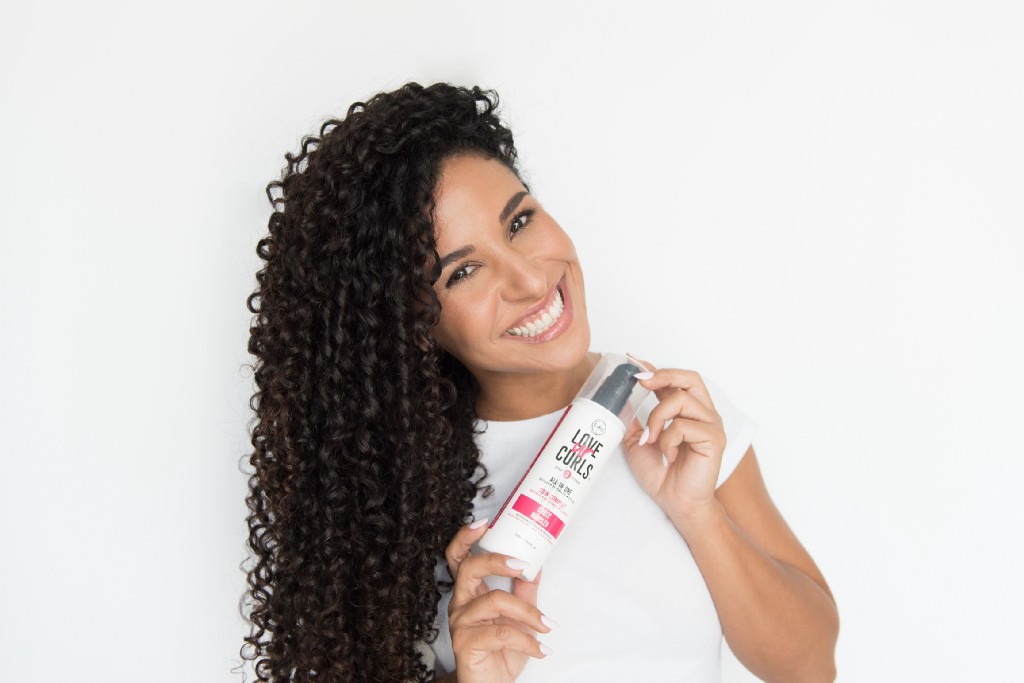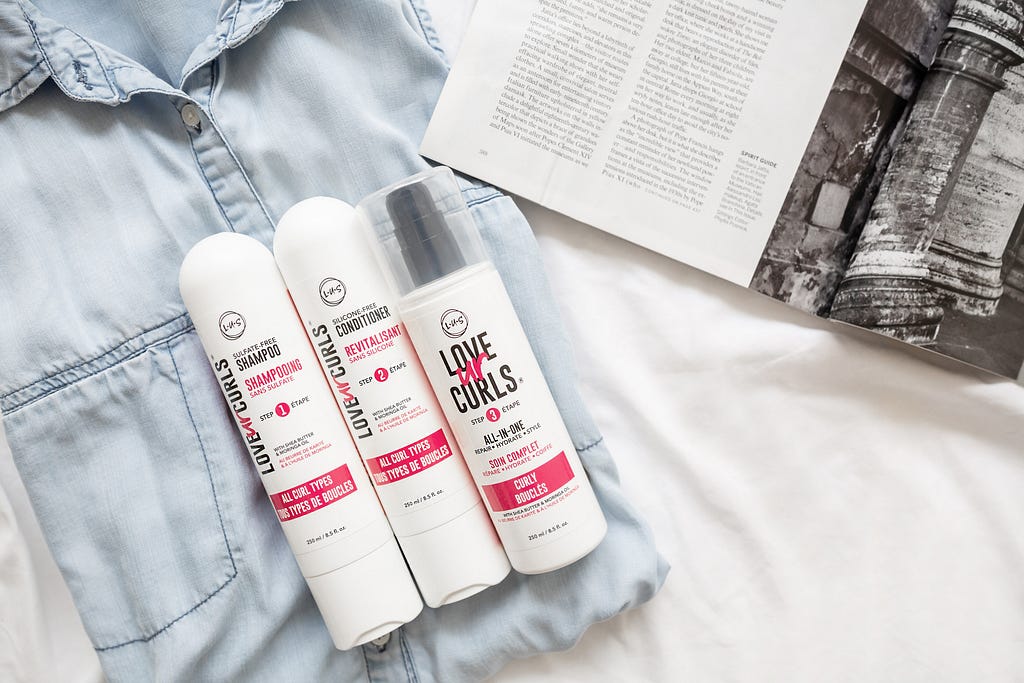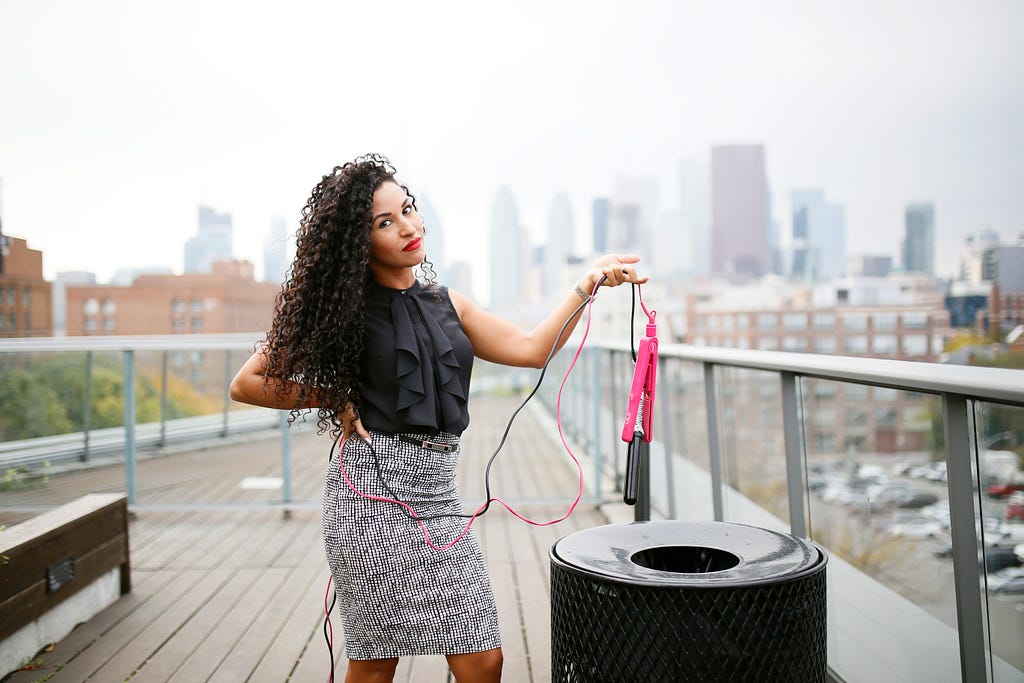
Sahar Saidi has what some would consider a “non-traditional” journey into her role as founder and entrepreneur. She dropped out of college after the first year to build her consulting career. Twelve years later, she went back to school to get her MBA. Despite the new degree and extensive, global work experience, she found herself unemployed. Driven by motivation and a personal challenge, the jobs she missed out on didn’t matter because she would soon become the CEO of her own company.
The problem Sahar wanted to fix truly was personal. After more than 20 years of buying hair products for her own curly hair, she found herself meticulously reading product labels and ingredients hoping that one of them would have the right balance. For most curly-haired people, the typical routine requires anywhere from two to five products to reach the desired outcome. But what if there could be just one true “all-in-one” product for curls? Sahar set out to build that solution: LUS Brands.
I did a lot of desktop research, then I got on the phone and started calling up cosmetic chemists and manufacturers. Over the phone and in person, I interviewed over 40 different chemists and labs. I sent them products that I liked and disliked, ingredients I wanted to include or avoid in my formulations, and eventually commissioned four labs to formulate for LUS. For months, I tested the formulas on my own hair. Nine out of ten times, they were complete failures.
A failure to me meant it was nothing different from all the other stuff already on the market. When we got to our winning all-in-one Curly formula (the one we sell today), I knew we found gold! There wasn’t just one product, like this one, that EVER made my hair look and feel the way that it did. When I slept on my hair and woke up the next day to almost-perfect curls, I was sold. There was nothing else on the market like it.
Once I fell in love, I distributed samples to my own friends and family and collected feedback. It was important to get feedback from real people, especially those who had different curl types than me, such as wavy and kinky-coily. With the new feedback, we went back to the chemists and kept tweaking until we reached perfection. Everyone’s input was priceless and important to our process of perfecting the final formulas, each customized for different hair types.

At LUS, our mission is to simplify curly hair care. Most brands in the market boast about having 150+ different products and have tried to convince curly-haired consumers (for decades) that we need multiple products just to “tame our mane.” I disagree.
Our manes are not meant to be tamed at all. LUS stands for Love Ur Self and we try to get our customers to embrace their naturally curly hair, including all of its perfect imperfections.
We don’t want anyone to change anything about their hair. Our one product does the job of 3 or more products, just as effectively! Curly hair care has been HARD for too long. There are too many products, they’re too expensive, too time-consuming to apply and style and redo the next day, etc… We’re here to make it EASY for everyone.

That it is so hard! As a consultant, I helped turn failing companies around and even helped one get to a successful exit from a loss position within one year. When I decided to start my own company, I thought, “I got this.” And for the most part, I do. But it is much, much harder than I ever imagined it to be.
As CEO of a fast-growing company, you wear many hats. Often times, you’re wearing too many hats. If you have an A-type personality and are used to being perfect or near-perfect with everything you touch, you realize very quickly that it’s impossible to do everything perfectly. There are only 24 hours in a day, so you either have to do less, very well, or do more, and accept being just “good.” That’s hard.
The same way I choose my team members! I looked for Hustle, Heart and Humility. Albeit, it’s harder to do with investors but it’s not impossible. I also looked for investors who had experience in areas of my business where I am weaker — like operations or tech. I imagined it like constructing an Advisory Board and determined during my meetings whether I would trust and value their advice and input. Thankfully, I’m very happy with my current investor pool.
Aside from the capital, the most helpful investors serve as sounding boards. Depending on what’s happening, I call different investors to talk through things. As a solo founder, I sometimes start to doubt my own decision making or judgment so it’s very helpful to have a seasoned group to go to.
The advice I would give other founders is that the most valuable thing you have is your time. So choose carefully who you want to spend your time with and how many investors you want or need around you. After fundraising, you will most likely have reporting requirements, and if you’ve structured a Board, you’ll have regular board meetings as well. You are not just selling a piece of your company when you partner with investors, you are also selling a piece of your own time.
This hasn’t always been easy and it’s an ongoing challenge that I try to tackle every day. When I’m “off” work and spending time with family, I feel so guilty. So I’ll hop on my phone or computer and start going through emails or something. Then I feel guilty that I’m working and not spending time with my family. It’s a vicious cycle of guilt between work-time and personal-time. I definitely want balance for my team, but I find it’s really hard to give that to myself.
As a founder, you have to come to terms that if you want to build an $X million/billion company in a condensed time frame, then you have to be willing to redefine work-life balance. You can’t have it all and if you want success badly enough, then you must be willing to compromise. Mental and physical health should always remain priorities, but friends and family time will probably be impacted while you’re building a company. It’s not possible to have it all.

I was all in, so there was no turning back for me. And when I say “all in,” I mean I funded the company by drawing against a personal student line of credit, so if LUS didn’t succeed, I would have had to apply for personal bankruptcy. And there was NO WAY I was going to do that! Failure simply wasn’t an option for me.
While building LUS, I found inspiration in other startup founders who had similar journeys before me. Those include Michael Dubin of Dollar Shave Club, Katrina Lake of Stitch Fix, SOPHIA AMORUSO of Nasty Gal, Jennifer Hyman of Rent the Runway, and so many more. However, even before LUS, I always felt inspired by people who overcame great odds to achieve unbelievable levels of success.
I’ve also been fascinated by the personal stories from artists, particularly in music, as many share in that “started-from-the-bottom” and risen to the top. Clearly, I’m a big fan of underdogs making it big. As an underdog myself, others before me have inspired me and shown me it’s possible. Someday, I hope to serve as an inspiration for others too.
In our Founder Spotlight series, entrepreneurs from our portfolio companies share insights about the problems they’re working to solve, how they built their companies, and advice to new entrepreneurs.
View our portfolio + follow us on Medium and Twitter for the latest updates!
Why Sahar Saidi Launched a New Product for People with Curly Hair was originally published in The Forecast on Medium, where people are continuing the conversation by highlighting and responding to this story.
© 2025 Comcast Ventures Terms of Service Privacy Policy Do Not Sell My Personal Information.